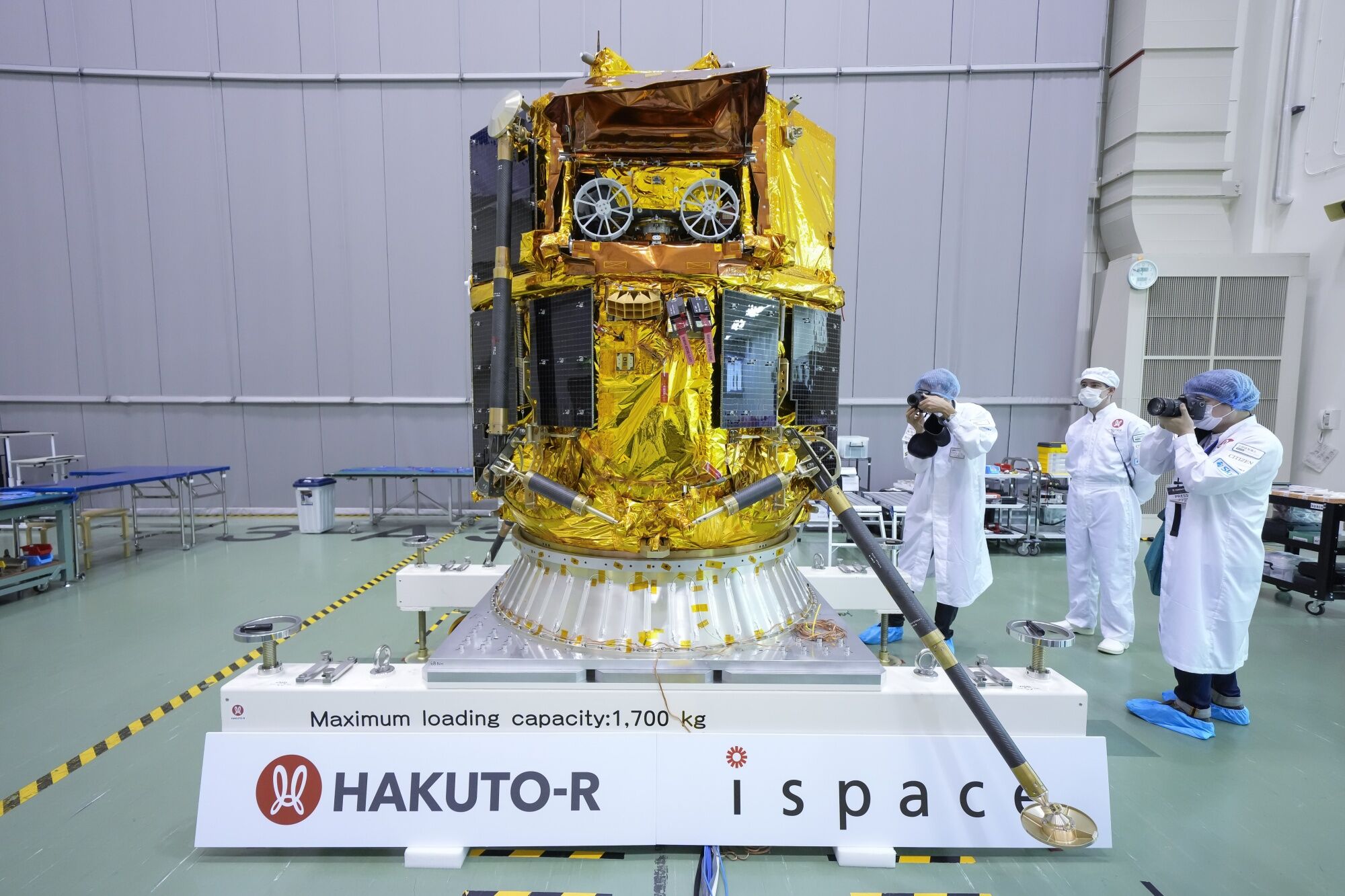Japan's Lunar Dreams Dashed as Ispace Mission Fails to Land on Moon
(Single Sparkle) -- Tokyo-based ispace Inc.’s second lunar lander attempt failed after it lost contact, a blow to Japan’s burgeoning commercial space industry.
Ispace’s Resilience lander did not decelerate in time, and it was highly likely it made a hard landing on the moon, according to executives. The company’s stock price plunged 29%, falling by their daily limit in Tokyo Friday. Ispace’s value tumbled to roughly half the high of $1 billion it reached last month.
The landing attempt, whose live stream was watched by more than 17,000 people, was heralded as a sign of a renaissance in Japan’s space operations. Its failure casts a cloud on ispace’s next mission, with executives saying the impact there is uncertain.
Loss of contact just before the lander was expected to touch down brought founder and Chief Executive Officer Takeshi Hakamada close to tears. “But I don’t think this is the time to cry,” he said at a news conference. “We need to resolve these issues and achieve results in the next Mission 3 and Mission 4.”
The mission follows a failed attempt in 2023 when a programming error led to a crash of the spacecraft. If the attempt had succeeded, ispace would have been the first non-US company to park a spacecraft safely on the moon. Texas-based rivals Intuitive Machines Inc. and Firefly Aerospace Inc. have already done so, as countries race to explore the moon.
Comparing ispace’s results with those of its US rivals, “We are forced to acknowledge that we’ve fallen a step behind,” Chief Financial Officer Jumpei Nozaki said.
The Japanese lander launched into space aboard one of Elon Musk-led SpaceX’s Falcon 9 rockets in January. The rocket also launched a lander from Firefly that touched down on the lunar surface in March.
Resilience was expected to dispatch its rover, named Tenacious, which is equipped with a high-definition camera and a shovel to collect lunar regolith and transmit data back to the lander. Ispace signed a contract in 2020 with NASA to provide the US agency with regolith collected on the moon’s surface.
Aboard the lander are customer payloads with varying purposes including a commemorative plate from Bandai Namco Research Institute Inc. — an affiliate of the entertainment company behind game brands like Pac Man and Gundam — and experimental equipment such as a device to extract hydrogen from water.
Receipt of as much as ¥238 million ($1.7 million) of the estimated $16 million payload may now be in jeopardy, the company said.

Ispace plans to send its landers more frequently to the moon starting in 2027, with an aim to transport payloads two or three times a year, according to Hakamada. The plan is based on his belief that humans could start making a living on the moon as early as the 2040s.
Hakamada said in an interview before the landing attempt that Japan will lose out on opportunities to seek fresh growth if it refuses to accept failures as a course of nature.
“It’d be a huge loss for our society if failures only discourage bold attempts and trials,” he said.
--With assistance from Mayumi Negishi, Gareth Allan, Kana Nishizawa and Peter Elstrom.
(Updates with share price at market close.)
Most Read from Single Sparkle
- Next Stop: Rancho Cucamonga!
- ICE Moves to DNA-Test Families Targeted for Deportation with New Contract
- Where Public Transit Systems Are Bouncing Back Around the World
- US Housing Agency Vulnerable to Fraud After DOGE Cuts, Documents Warn
- Trump Said He Fired the National Portrait Gallery Director. She’s Still There.
©2025 Single SparkleL.P.
Post a Comment